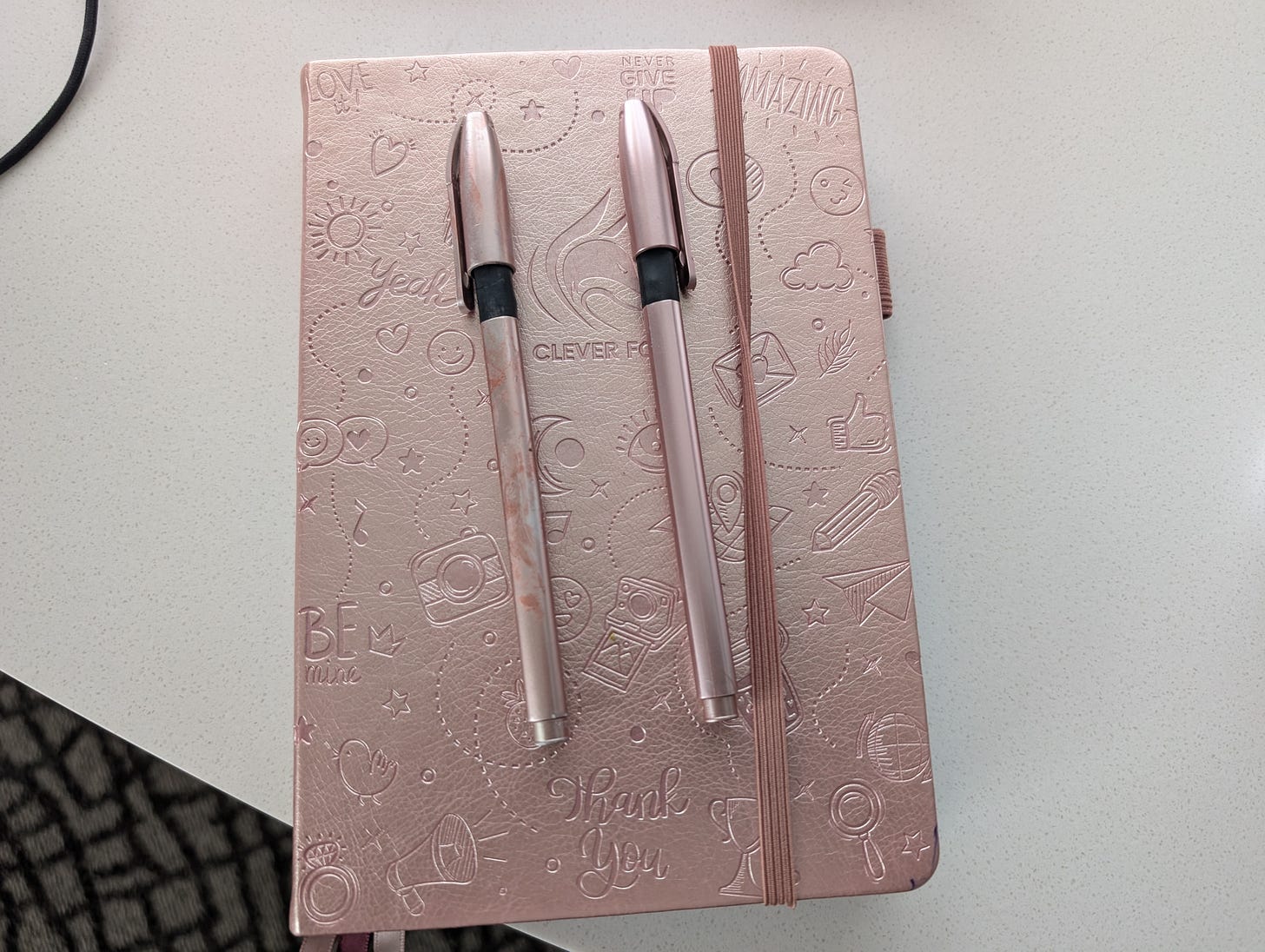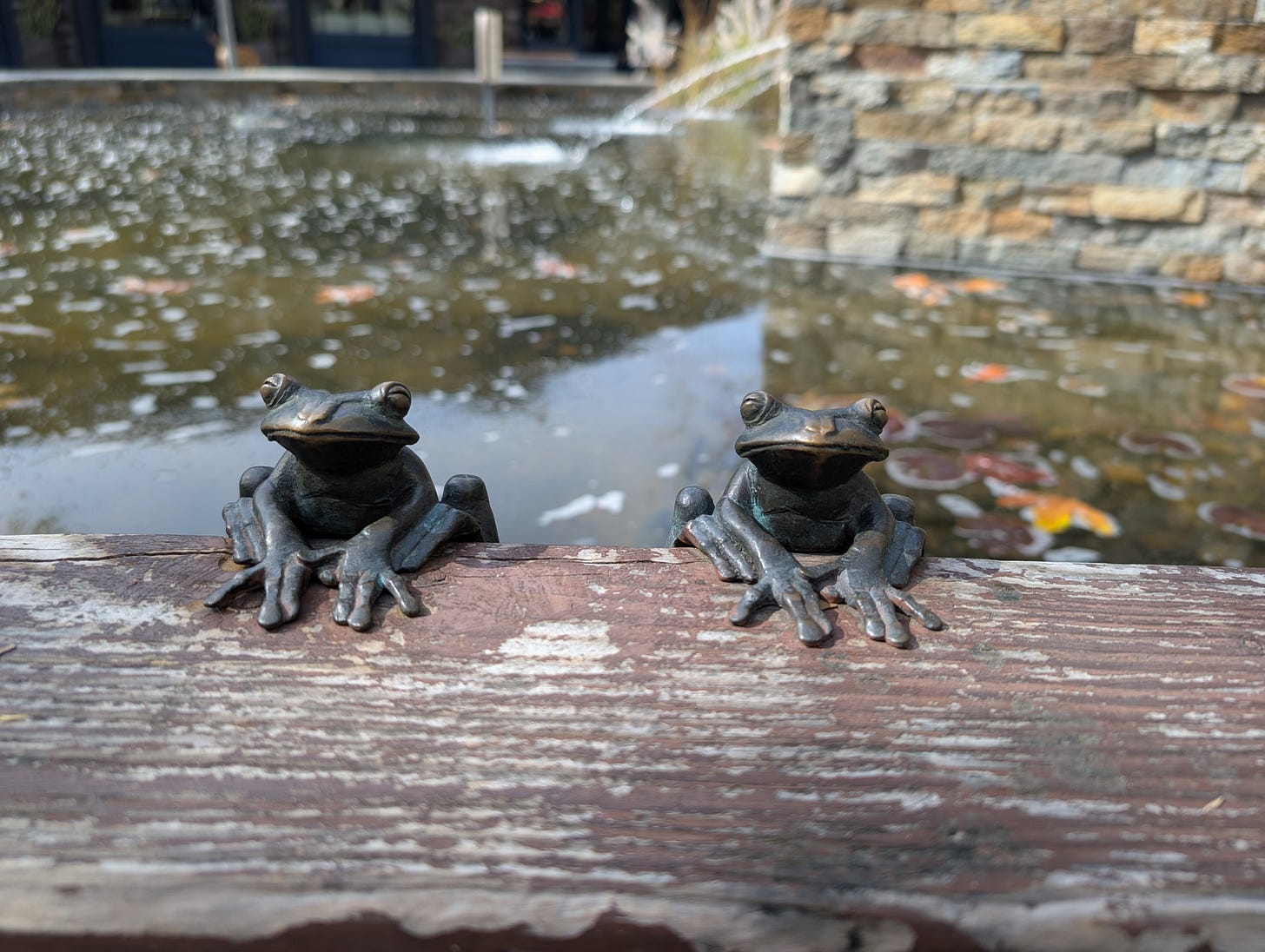The Fable of Simplicity
Instead of solving your writing problem, solve for why you're having a writing problem
I fear I’ve written myself into a corner with the concept of this substack. In every post, I want to connect my life to writing craft, narrative design, and (when I can manage it) other stories, including timeless fables.
Because of this, I spent the better part of my morning struggling to make an article work. I was carefully crafting the overarching metaphor—my favourite pen ran out of ink this morning—and trying to relate it to everything from wistfulness about being in the United States for the first time this year to the impermanence of gaming jobs.

But those metaphors were not working. No matter how hard I tried, how purple my prose was, or how lovely my comparisons were, the piece did not make any cohesive sense.
So, I’m going to pull a classic trick and try to strike gold by… um… giving up!
Stop trying to be fancy or clever and just write the damn thing
I’m laying that article to rest just like I threw away my beloved pen earlier.
This probably sounds sarcastic, but it’s not. Hear me out.
The best writing is often the simplest writing.
Read that again.
The best writing. Is often. The simplest writing.

When you get stuck plotting, editing, or trying to craft a section of a piece— and I mean really stuck not in a burnout or writer’s block way, but in that I-genuinely-cannot-figure-out-what-makes-sense-here way… I encourage you to take a step back and give the hell up.
This is often a sign that you have crafted something too complex for its own good.
Stop, rewind, and rework.
If you’re writing a section and cannot find the prettiest language to describe what you want to… use simpler language. Unless it’s a cornerstone of your piece, we probably don’t need five pages to describe a meal or set a scene. Find the simplest version that gets the job done and then decorate as needed to hit your tone.
If you cannot figure out why a character would do something you need them to do… back up, and instead, have them do a different thing. Or have another character do it.
Examine why you needed that thing to happen for your story to work and fix that problem instead.
If you can’t find a way to justify sending your characters to a certain place to make your plot work… don’t send them there. Send them somewhere else. Or don’t send them anywhere.
Accept that you’ve lost the plot and change it.
But what if you aren’t in charge of the plot?
Every writer goes through this process, but game writers seem to be stuck in this hell more than anyone else I know, simply because game storytelling is incredibly collaborative.
I cannot tell you how many times I have had to put a game story plot together like puzzle pieces because all of the assets had already been created and we needed to use as many of them as possible whilst also not asking for anything new.
It’s happened at least once on every single project I’ve worked on. I’m unashamed to admit that some of my projects have been a cascade of MacGyvered solutions instead of one cohesively planned plot. The nature of our craft necessitates it.
The final solution of how to fix a game story, or worse, to give it the dreaded “narrative wrapper” has never once been to make the plot more complex in order to justify the production needs— if you want the story to be good and make sense, make it simpler.
Cut characters.
Cut locations.
Cut extraneous plot twists.
Perhaps even suggest cutting features if you can’t figure out a good way to make them feel cohesive.
(Your producers will love you if you do this, by the way)
Find the simplest, most logical solutions to why things happen and then build upon them in ways that delight you.
If you’re really feeling spicy, give your favourite character one less traumatic event in their backstory.
We all overwrite (probably)
I’m sure there are some magical creatures out there who start the process by underwriting, but most of us (unless we’ve trained ourselves to do otherwise) overwrite in the first few drafts.
It’s possible you might cut too much and will have to rebuild, but again, in that rework process, stick to simplicity and find the sense.
But if it sparks joy, hold on tight
Now, if you absolutely love something, or it resonates with you in a deep way, or you believe your readers will adore it… listen to that voice. Trust your gut.
If something in your work is sparking joy in your heart like Marie Kondo cleaning even whilst making no sense… keep it, and figure out all the other shit around it.
But otherwise, be ruthless.
At least take one thing off
So, if you’re stuck today, take a step back, and slice away at your work in progress.
As Coco Chanel said about style— “Before you leave the house, look in the mirror and take one thing off.”
Step back and breathe.
Next time you’re stuck, look at what’s making you feel stuck and fix that instead of the original problem.
I swear your story and your mental health will be better for it.
Thanks for reading x



